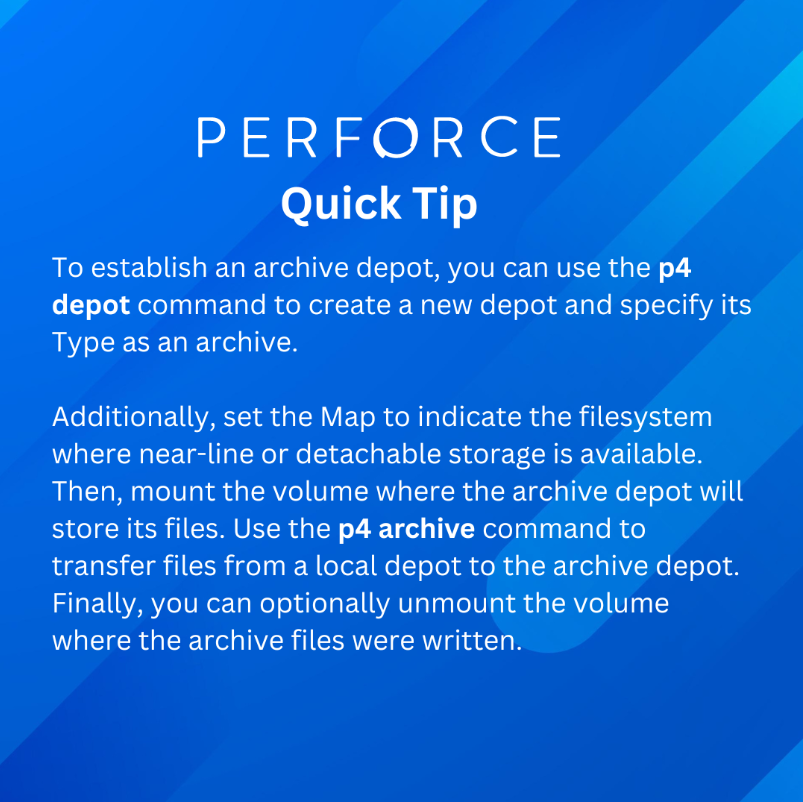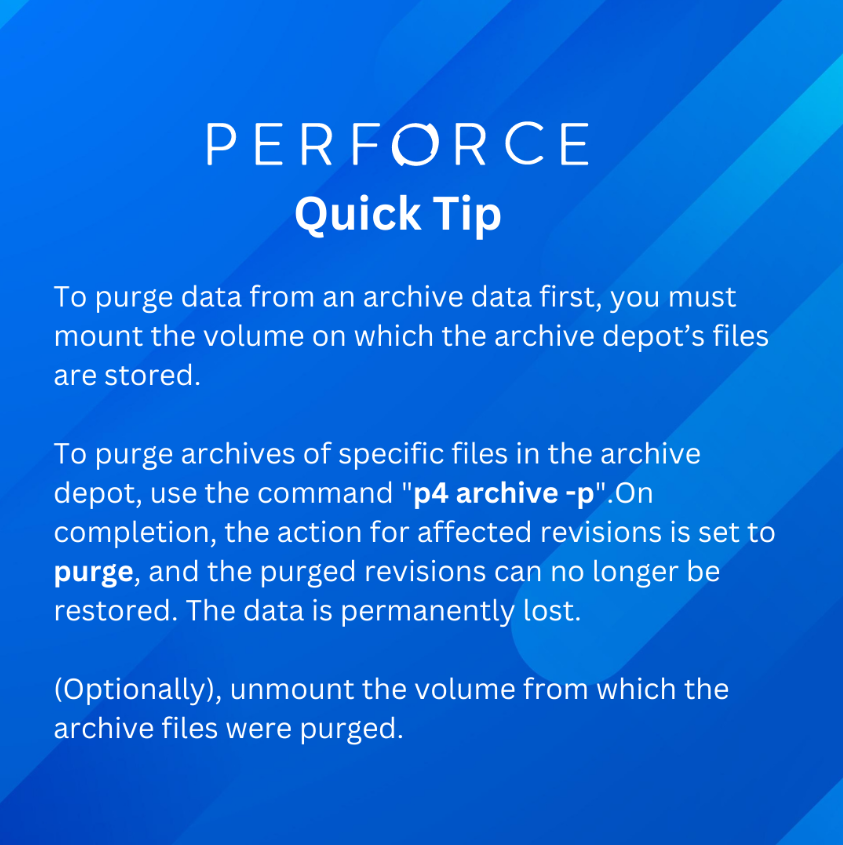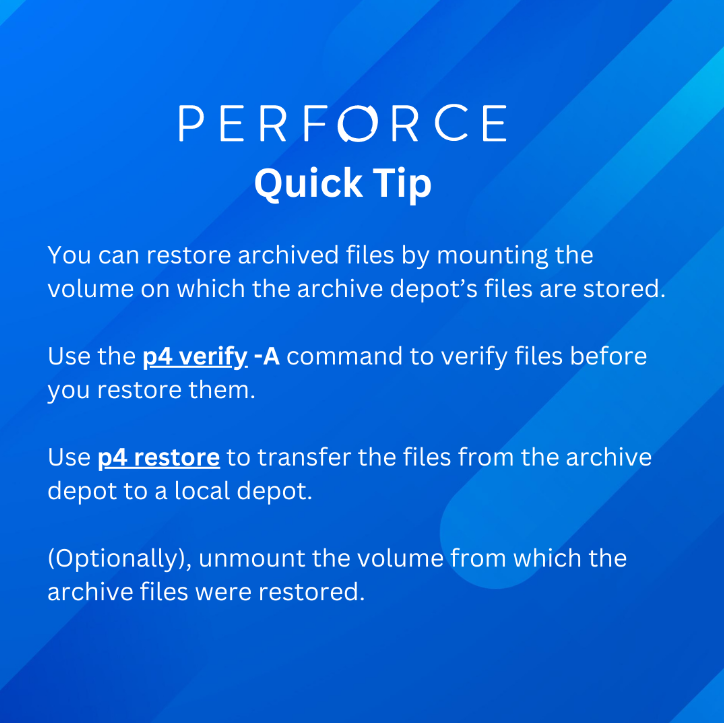
I’m a solutions engineer at Assembla, and I’m back with another Perforce tutorial. This one focuses on a key aspect: Archiving files.
When using Perforce, you need a streamlined backup plan, restore depots and to manage your disk space to best practices. The first thing we’ll get into is the importance of Archiving files in Perforce.
This allows you to store older or infrequently accessed versions of files in a compressed format, which reduces the storage footprint on your server and improves overall system performance. Only the most recent and actively used files remain readily accessible, while archived files are stored separately.
Most importantly, you can streamline a workflow by archiving files; you can exclude them from regular backups and focus on critical data. This reduces backup time, storage requirements, and associated costs. Archiving also enables you to restore specific files or versions as needed without restoring the entire repository.

Let’s say you have files that are not accessed frequently, so you archive them. Archiving large files or binary assets that are not frequently accessed can significantly reduce network traffic. When users sync their workspaces or update their local copies, Perforce retrieves only the necessary files, resulting in faster sync times and reduced bandwidth consumption.
It’s worth noting that the archive feature helps improve overall system performance by reducing the size of the repository. Smaller repositories result in faster operations such as syncing, branching, merging, and searching, mainly when dealing with large codebases or projects with extensive histories.

Archiving files is crucial for compliance and auditing purposes. It allows you to retain a complete historical record of all changes made to your digital assets. By preserving archived files, you can meet regulatory requirements, conduct forensic analysis, or perform investigations if necessary.
In managing space, archiving files helps you better manage disk space on your server or on your Single Tenant instance. Removing older versions or less frequently used files from the active repository frees up space for new development work and ongoing projects. This allows you to maintain a well-organized and efficient version control environment.

More changelists, history, this means as your projects and repositories grow over time, archiving becomes even more valuable. It enables you to accommodate increasing file sizes and handle expanding codebases without compromising system performance or overwhelming storage capacity.
The archive functionality in Perforce provides efficient storage, streamlined backups, reduced network traffic, improved overall performance, compliance and auditing capabilities, space management, and scalability. These benefits contribute to a more streamlined and optimized version control workflow for development teams.
As always, email me at montana@assembla.com if you have any questions.
Happy Perforcing and Assemblaing!
